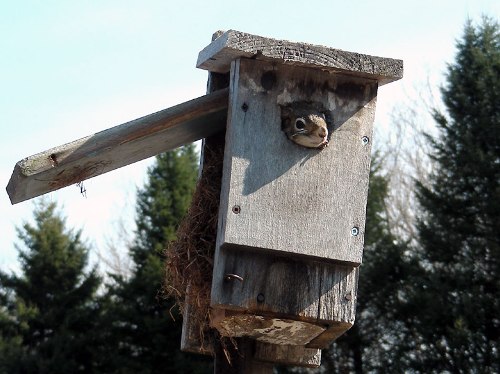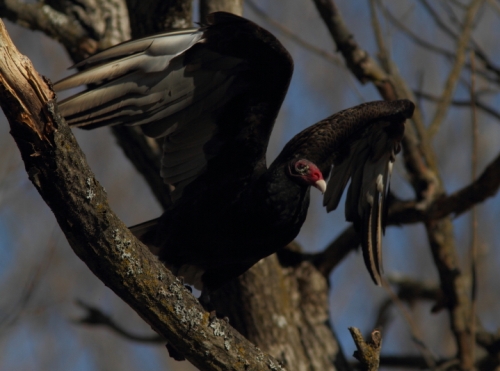|
|
THIS WEEK |
THIS SPRING |
2011 TOTAL |
SITE TOTAL |
|
# birds (and species) banded |
- |
- |
71 (8) |
31640 (107) |
|
# birds (and species) repeat |
- |
- |
8 (1) |
5515 (68) |
|
# birds (and species) return |
- |
- |
24 (2) |
831 (37) |
|
# species observed |
37 |
42 |
52 |
202 |
|
# net hours |
- |
- |
23 |
49640.1 |
|
# birds banded / 100 net hours |
- |
- |
308.7 |
63.7 |
|
|
Note: table does not include nocturnal banding (owls) |
Banders-in-charge: Simon Duval, Gay Gruner
Censusers: Jean Demers, Leah Den Besten, Sarah Dixon, Ian Goodfellow, Gay Gruner, Barbara MacDuff, Francine Marcoux, Betsy McFarlane, Chris Murphy, Greg Rand, Clémence Soulard, Elise Titman, Rodger Titman.
Notes: In our second week of spring, we averaged more than one new species per day as northbound migrants continue to return. New species for the year were Wood Duck, Green-winged Teal, Hooded Merganser, Northern Goshawk, Killdeer, Northern Flicker, Rusty Blackbird, and Brown-headed Cowbird; in addition we saw our first Turkey Vulture and Golden-crowned Kinglet of the season, although both had previously been spotted in late winter. The mergansers were present on the ponds for two consecutive days, and this marks the sixth consecutive year that we've had a visit from this species in April or May, but they never stick around long, probably because our ponds are lacking fish. Meanwhile, although the Wood Ducks were a bit late to arrive this year, they have quickly become dominant. We trust they're searching for nest sites, and hope they'll give one of our boxes a try this year. Our dozens of nest boxes (just a few for the ducks; most others targeted at Tree Swallows) have been cleaned and readied for new occupants; thanks to Sarah Dixon, Ian Goodfellow, and Francine Marcoux for their help with this annual early spring task.
This week’s
top 10
#
individuals banded |
mean # individuals observed daily |
- |
1. Canada Goose (510) [2] |
- |
2. Greater Snow Goose (36) [1] |
- |
3. Bohemian Waxwing (31) [4] |
- |
4. Red-winged Blackbird (29) [3] |
- |
4. Ring-billed Gull (29) [6] |
- |
6. Cedar Waxwing (18) [9] |
- |
7. Wood Duck (13) [-] |
- |
8. American Robin (12) [-] |
- |
9. American Crow (11) [5] |
- |
9. Black-capped Chickadee (11) [7] |
|
Sticking with tradition, Canada Goose was the most abundant species in week 2 - as has been the case every year since our first spring season in 2005! Red-winged Blackbird and Snow Goose have generally been the next most common species during week 2, and both were again in the top four this week, joined by the late-lingering flock of Bohemian Waxwings. New to the list compared to last week were American Robin and Wood Duck, displacing a couple of more winter-associated species, Slate-coloured Junco and Common Redpoll. The Robin numbers are close to average for this time of year, but the Wood Duck count is the highest daily average we've ever recorded this early in spring. Perhaps they're more attracted than usual due to the high water levels; regardless of what has brought them in, we hope many will stay to nest, and look forward to seeing multiple broods by late spring or summer.
|

This cheeky Red Squirrel wasn't willing to wait for our spring cleaning of the MBO nest boxes - when we got to opening this one, it was already full of nesting material, and the resident made it clear that this box won't be for the birds this year!
(Photo by Gay Gruner)
|


